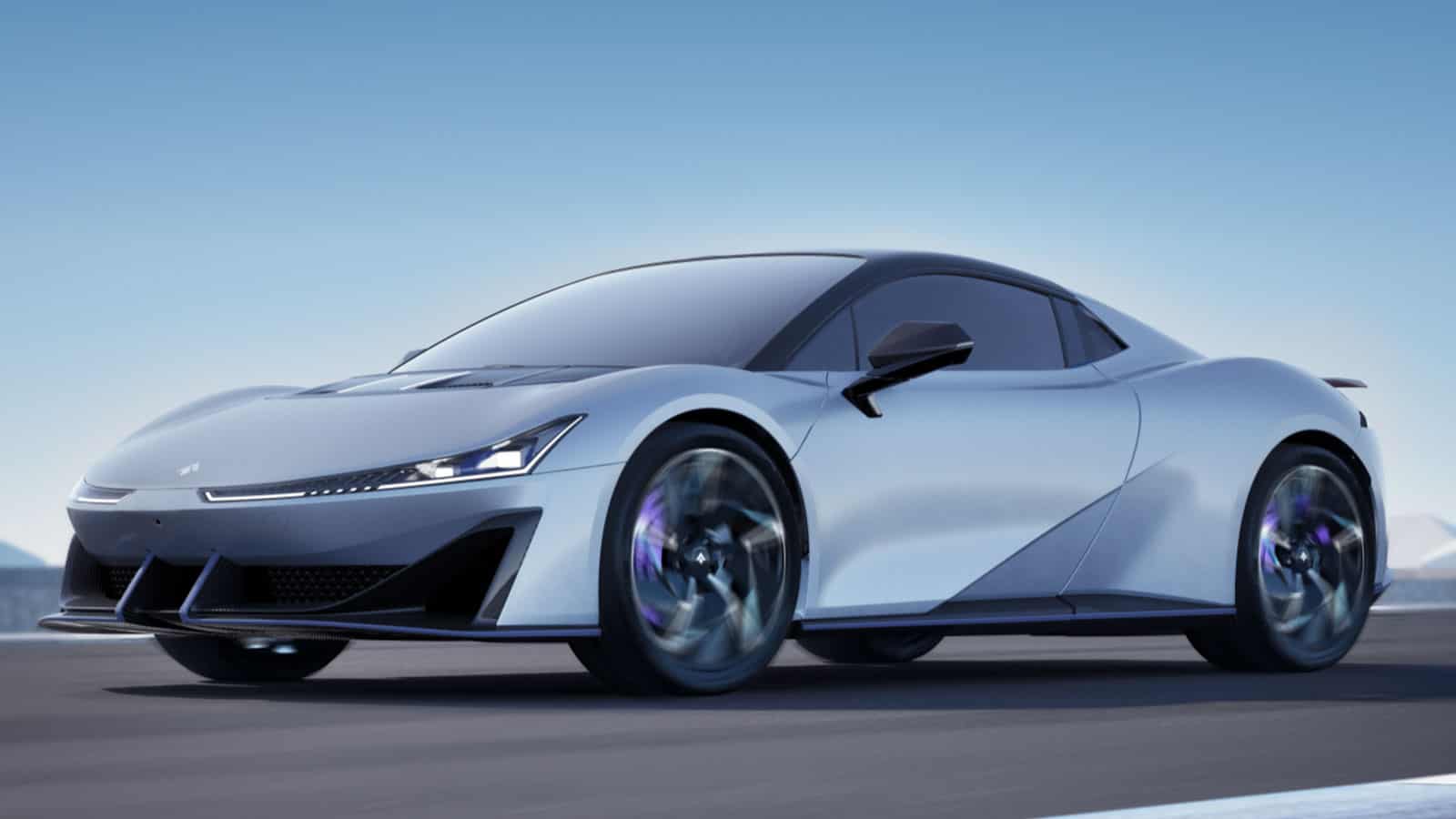- The China-made Hyper SSR has a zero-to-60 MPH time of 1.8 seconds.
- The supercar is a partnership between Hyper, GAC Aion, and other innovative manufacturers.
- It comes with a Quark motor, a magazine battery, and racing tires.
- This comes as US drivers vote against building new battery plants, and EV drivers have to deal with gas-powered cars parked in EV charging spots.
While the American automotive industry is looking for ways to make EVs bigger, heavier, and less expensive, the Chinese auto industry is turning in another direction: supercars. In early October, the first electric luxury supercar – the Hyper SSR – slid off the production line.
And this car is taking EVs to a new level using only parts manufactured and assembled in China.
Setting a New Standard with the Hyper SSR

The Hyper SSR is made in Guangzhou, China thanks to a partnership between Hyper and GAC Aion. GAC is the acronym for Guangzhou Auto Group which includes global manufacturers like Toyota, Honda, and several Chinese brands.
The Hyper SSR boasts the fastest acceleration with a zero-to-60 MPH time of 1.8 seconds. Hyper worked with several manufacturers in the automotive, aviation, and electronics industries to craft the specialized parts to build the Hyper SSR.
ADVERTISEMENT
This unique vehicle has an innovative Quark motor with special packaging for magnetism, materials, and cooling. It also has a magazine battery with multiple batteries that share heat-resistant and heat-insulating components. Hyper outfitted the Hyper SSR with long-fiber carbon ceramic brake discs, racing tires, and 900V silicon carbide chips.
Hyper SSR Specs

The Hyper SSR is an NEV with 1,224 horsepower, a 314-mile range, and a price tag of about $176,400. It’s available in three trims, the entry-level SSR, the SSR Speed Version, and the SSR Ultimate Track Version. The top MSRP is $231,200, which is significantly less than European supercars.
“SSR” stands for “Super, Sport, Race,” and the two-door coupe has L-shaped headlights, gull-wing doors, and large air intakes. The active spoiler and thin tail lights give it that supercar look, and the carbon fiber exterior body panels lower the weight to up the speed.
On the inside, the Hyper SSR has heated and ventilated seats, a 14.6-inch touchscreen, and an 8.8-inch LCD instrument panel behind a rectangular steering “wheel.” The seating and interior accents are draped in posh black leather, for a truly upscale supercar look. GAC Aion offers preorders for the Hyper SSR, but only deliver within China currently.
ADVERTISEMENT
America Quickly Falling Behind Chinese EV Innovation
As Chinese manufacturers are partnering to build state-of-the-art EVs with mind-blowing speed and efficiency, EV drivers in the US have to deal with getting “ICE’d” at EV charging stations. People with gas-powered vehicles seem to enjoy preventing EV drivers from filling their batteries, even on college campuses. Either that or they can’t read signs?
Microaggressions at US Public Charging Stations
I’ve been ICE’d twice recently, and I’m sure I’m not alone. The last time was in a college parking lot with hundreds of empty parking spots and FOUR EV charging spots. Despite the numerous open parking spots with many close to the door of the nearest building, two gas-powered Chevys were blocking two spots (the two others were occupied by charging EVs). The lack of consideration for EVs is palpable.
Choosing Not to Innovate
As China continues to prioritize EV engineering and manufacturing, Impoverished American communities are rejecting innovation as they vote down building new battery plants that contribute to zero-emissions transportation and create new jobs. This community has a 13 percent unemployment rate and per capita income of $25,000 according to the latest census. Drivers have a 29-minute commute.
ADVERTISEMENT
An EV battery plant would make a difference in the rural community in mid-MIchigan with 94 people per square mile. Rather than helping themselves, they voted to deliver the perception of “sticking it to China,” despite China succeeding without assistance from the Western world.
It’s time to face reality and make better choices by encouraging innovative emissions-free vehicles that help the planet for future generations. ICE-ing drivers and voting down manufacturing opportunities isn’t the way to achieve greatness and move into the 21st Century.
China Showing the World Why Their EVs Dominate

China is putting the US to shame as it is developing new energy vehicles that reduce emissions. As the first Chinese supercar rolled off the lot, China established itself as the leader in electric and alternative energy vehicles. The country can now be considered in the same sentences that include Ferrari and Lamborghini, and European supercars are no longer the industry standard.
The US and the Western world have a long way to go to catch up to the Chinese EV market. If American automakers and citizens want to compete globally, it’s time to embrace the EV market and partnerships around the world.
We could have cars like this in North America if we just opened our minds to alternatives to the internal combustion engine. We are clearly falling behind with EV innovative and robust charging station availability.
ADVERTISEMENT

IMAGES: AION
FTC: We use income-earning auto affiliate links. Learn more.











